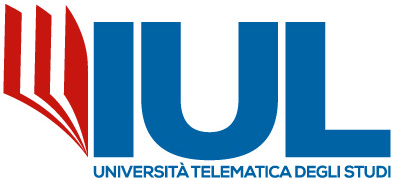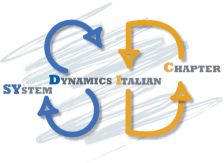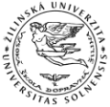Workshops
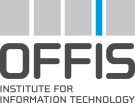
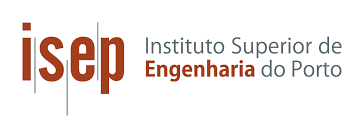

CyberFactory: Optimization & & Resilience of Factories of the Future
With the advent of Industry 4.0, digitalization and automation processes have moved into the focus of industry. The primary goal is not the optimization of a single production plant, but of the factory as a whole by the marriage of physical assets and advanced digital technologies, such as the internet of things (IoT), artificial intelligence (AI) and robots. From a modeling perspective, the individual components of the factory thus become cyber-physical systems (CPS) that communicate, analyze, and act upon information, enabling more flexible and responsive production. This track focuses on the development and application of methods for modeling and simulation of CPS for the factory of the future (FoF).
Topics include, but are not limited to:
- Requirements on CPS modeling for optimization and resilience of the FoF
- Architectures for the FoF
- Application of existing CPS models to industry: benefits and gaps
- Usage of digital twins for optimization and resilience in the FoF
- Data lake exploitation for the FoF
- Models & Simulations for the identification of threats on safety and security in the FoF
- Tool support for modeling & simulation of the FoF
- Uncertainties and predictions in the FoF models
- Modeling of human-machine-interaction in the FoF
- Distributed manufacturing
- Cyber resilience modeling for the FoF
Submit your proposal on Cyber-Physical System Modelling here

IoT, AI & Cybersecurity
Internet of Things (IoT) and related applications are bringing fundamental changes to all domains where they are deployed. Big change is undergoing in the digital layer covering several domains: Healthcare, Manufacturing, Agriculture, transport, etc. The introduction of smart-devices, CPS (Cyber Physical Systems) and Artificial intelligence in the decision process, leads to several questions to be solved. Cybersecurity and Privacy are considered urgent and complex to solve.
In fact, Smart devices are expected to be self-adaptive, safe, secure and easily interoperable with IoT-platform’s services. Used devices are far to be considered trustable and performant. The challenge is to develop next generation of IoT-devices, platforms and frameworks which could facilitate their design and deployment.
The use of Distributed Artificial-Intelligence (AI) and Metaheuristics solvers (PSO, GA, etc.) is highly recommended to enhance autonomous and optimization. In addition, the whole solution should guaranty end-user trust and compliance with deployed security Policy. So, AI, security and privacy have to be ensured by design.
The future of the Internet of Things applications will depend on the development of sophisticated and secured IoT platforms and architectures specifically designed for smart objects and which can contains embedded intelligence security features, and can easily exchange with besides IoT-devices or remote services (e.g Cloud or Fog services).
Next generation IoT Platforms should provide smart-connectivity, distributed intelligence and trust connection to cloud services. It should also provide other features and services such as data analytics, open APIs, semantic interoperability and security.
Papers are solicited in, but not limited to the following topics:
- IoT in Healthcare
- IoT in Manufacturing
- Industry 4.0
- Blockchain in industry 4.0
- Security of Smart-IoT devices
- IoT in smart-Agriculture
- Securing Machine Learning applications
- Securing Deep Learning applications
- Codesign of Smart IoT-devices
- Smart IoT
- Security and privacy
- Interoperability
- Next generation of IoT architectures with focus on AI and Blockchain handling
- Blockchain in IoT solutions
- Distributed systems security
- Intelligent transportation systems security
Submit your proposal on IoT, AI & Cybersecurity here
Cross Fertilisation between Simulation and Formal Methods
Simulation and formal methods are key activities in the model based development of complex systems. Both allows to gain confidence and conduct early validation and verification activities based on models.
We will name formal models the models expressed in a formal modeling language and simulation models the models expressed as a program that can be executed to produce the simulation results. Both approaches have advantages and drawbacks but are mainly used independently one from the other.This workshop targets the combined use of simulation and formal methods in order to ease their use and raise the level of quality of the designed system.
Here is a partial list of subjects that will be explored during the workshop:
- use of simulation on formal models to check that these ones fits the designer intention (model validation)
- use of simulation on formal models when formal verification do not scale up to the formal model size (model verification)
- use of simulation on formal models to understand errors detected by formal verification (model debugging)
- use of formal methods to specify the intended semantics of simulation models
- use of formal methods to assess the correctness of simulation algorithms
- use of formal methods to ensure the correctness of the simulation platform
- cross assessment of formal models and simulation models to ensure their correctness, representativity, ...
- process, methods and tools that combine simulation and formal methods
Submit your proposal on Cross Fertilisation here
Virtual Prototyping
Virtual prototyping enables developers to begin development for systems before hardware is available. Virtual prototyping is based model driven approach used to validate functional decisions and embedded software early. One of then goals of this workshop is to propose new approaches that lean to improve the virtual prototyping concerns as accuracy, execution speed, system interfaces and automatic translation to different hardware. This can be achieved using methodology, modeling the system with different abstraction levels, fpga prototyping, distributed simulation and so on.
Topics include but are not limited to:
- Virtual prototyping architecture, modeling methodology and system concept development
- Hybrid Virtual prototyping methodology
- Virtual prototyping tools, environment and platforms
- Distributed simulation for Virtual prototyping
- Virtual prototyping for IOT
- Virtual prototyping for cyber-physic systems
Submit your proposal on Virtual Prototyping here
Simulation in Energy and Power Systems
Simulators: Real-Time simulation methods, GUI, Advanced modelling tools, Trainees' performance evaluation, Simulator Projects Simulation Studies: Simulation during design, Safety and environmental hazard estimation, Production optimisation. Methodology: Real-time simulation and visualisation tools, Parallel and distributed simulation. Nuclear Fuel Cycle Simulations based on Monte Carlo techniques to simulate the behaviour of Non Destructive Assay (NDA) instruments used in nuclear safeguards.
Submit your proposal in energy and power systems here
Renewable energy technologies
Power GridsOn-site, off-grid, grid-supplemented generation systems; combined heat and power (CHP) and micro-CHP systems
Power PlantsNuclear energy from fission and fusion, Geothermal power plants, biomass fuel, low emission coal plants, Stirling cycle engines, bio-fuelled diesel generators.
Solar EnergySolar power, Solar cells, Photovoltaic solar energy, Solar thermal power stations, Solar power generators household energy systems, New solar cell production (from inkjets f.ex.), Affordable photovoltaic solar energy.
Wave EnergyTidal wave energy stimulation, Hydropowerwave/tidal.
Wind Energy and materialsMicro-wind turbines, horizontal and vertical axis aero-generators, Wind Turbines, Brushless double fed generators for windmill parks, Superglass for windmill ball bearings. Specifically also looking at:
- Aerodynamic performance modelling on single blade
- Power curves and Torque investigations for complete turbines
- Turbulence wake modelling and interference on a wind farm
- Wind and natural relief effects on turbines
- Fluid Structure Interaction on a single blade
- Offshore wave interaction on turbine masts
- Turbine spacing and location optimization
- Impact analysis on turbine masts and blades, (such as bird strikes)
- Harmonic response and vibrations
- Electromagnetic analysis and optimisation
- Fatigue
Submit your proposal in alternative energy here
Simulation in Engineering Processes
The Modelling in Engineering Processes track focuses on the application of simulation in mechanical and structural engineering. Oscillations and Waves, Stability and Control, Computational Mechanics, Numerical Analysis, Mathematical Methods in Engineering Sciences, Optimization Advanced simulation of dynamic systems, Simulation-based design, Qualitative modelling and simulation in engineering, Fuzzy modelling and simulation, Evolutionary synthesis and evolutionary methods in design, Rapid prototyping, CASE systems in engineering design, Modal Logic systems in design, Simulation in support of system specification and design, Construction Engineering and Project Management.
Submit your proposal in engineering processes here
Model Driven Engineering
This track covers, requirements modeling for simulation, domain specific languages for modeling and simulation, model transformations for simulation model building, model transformations for simulation model implementation, model-driven engineering of distributed simulation systems, relationship between metamodeling standards (e.g., MOF, Ecore) and distributed simulation standards (e.g., HLA, DIS), metamodels for simulation reuse and interoperability, model-driven technologies for different simulation paradigms (discrete event simulation, multi-agent simulation, sketch-based simulation, etc.), model-driven methods and tools for performance engineering of simulation systems, simulation tools for model-driven software performance engineering, model-driven technologies for simulation verification and validation, model-driven technologies for data collection and analysis, model-driven technologies for simulation visualization, Executable UML, Executable Architectures, SysML / Modelica integration, Simulation Model Portability and reuse, model-based systems verification and validation and simulation for model-based systems engineering
Submit your proposal in model driven engineering here
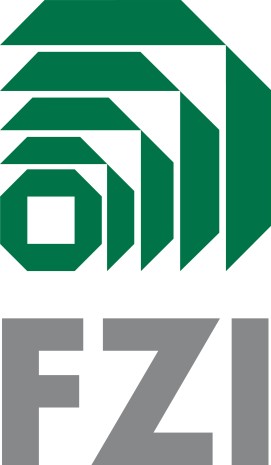
Simulation-based evaluation of interactive systems
IT systems are becoming increasingly more complex, both in terms of their scale and in terms of their individual functionalities. At the same time, the systems should be intuitively usable and should possess a flat learning curve for the user. The integration of the users into the analysis and the entire evaluation process is thus essential and new methods to increase the efficiency of evaluation are strictly required. One particularly useful method for the efficient evaluation and analysis is simulation. Within the scope of the workshop, new innovative methods and approaches for the practically oriented simulation-based evaluation of interaction-centric IT systems should be presented. An example could be a new approach to the simulation of reality in Living Labs.
Topics include, but are not limited to:
- Living Labs as simulation environments for evaluation
- Infrastructure simulation in Living Labs
- Evaluation of user interactions with graphical user interfaces
- Methods of practically oriented simulation-based evaluation
Submit your proposal in simulation based evaluation here
Simulation and Modelling for humanitarian/emergency operations and logistics
In recent years, the topic humanitarian logistics becomes significant in particular after the disastrous execution of the logistics after the Indian Ocean tsunami in 2004. Then the Indian Ocean tsunami 2004 caused high costs and the logistics organization was shocking and miserable. The problems in such natural disasters are various: information and communication network system are destructed, access to roads are limited, infrastructure are destroyed and the equipment to remove destroyed buildings and further resources such as trained local officials as well as volunteers are not available. All these problems complicate the coordination and organization in the logistics in such case. With the ongoing of disasters the humanitarian logistics, emergency and the humanitarian aid have to be managed more efficiently.
Since 1975 the total number of natural and technological disasters increased, a high increase of six-fold is to be recognized especially for natural disasters as well as a high number of affected and killed people. 385 natural disasters without the consequences such as diseases and epidemic hit 131 countries worldwide, affected 217 million people, killed 297 thousand people and caused US$ 123.9 billion of damages in 2010. Researcher expect a steadily increase of fivefold times for the number of natural disasters over the next fifty years. In 2006 the UNITED NATIONS also confirmed that the natural disasters become over the next years more severe, often and destructive. As a consequence, disaster managers, policymakers and researchers should make every effort to improve disaster planning, preparedness, response as well as management.
That said researchers are engaged to investigate in disaster preparedness, response logistics and relief network management, Coordination and network, Inventory management, Operations planning, Warehouse operations, Transportation Planning Distribution Planning, Humanitarian Logistics Simulation, Sustainable Logistics and Supply Chains, Disruptions Management in Sustainable Supply Chains, Green Logistics.
Submit your proposal in humanitarian simulation here
Simulation in Hospital Logistics
Decision support systems in medicine (diagnosis, prognosis, therapeutic, treatment follow-up...) which are based on medical knowledge representation, ontologies and cooperation of different knowledge sources. Organisation of health care units (hospital, ...) which involves management, economics, law, deontology, ethics, social and information technology aspects...f ex. Patient waiting time simulation, Emergency evacuation simulation, Brancardage, hospital occupation simulation and optimization. Healthcare Networks, Modelling of Clinical Environments, Clinical Information Flows, Patient Flows in Hospitals, Wards Planning, Drugs Inventory Management, Logistics Flow, Long and Short Time Tables of Personnel, Utility and Case Analysis of Helicopter Usage, Information and Surveillance Systems.
Submit your proposal in Hospital Logistics here
Simulation in Logistics and traffic
Strategies and Concepts for Production and Logistics, Technical and Organizations Planning of Production and Logistics Systems, Value Stream Mapping, In-Plant Logistics, Integrated Factory and Logistics Planning, Innovative Planning Methods, tools and systems. Production Scheduling and sequencing, Optimization of Production and Assembly Lines Design, Robust Supply Chain Management, Demand Driven Supply Networks, Inventory and routing
Traffic flows, multi-modal systems, transit, transportation modes, urban city transport, transportation in logistics, transportation management, traffic demand, traffic control, traffic telematics, traffic performance, safety, macroscopic, mesoscopic and microscopic simulations. Tools for risk assessment analysis and monitoring of container traffic.
Submit your proposal in Logistics here
Supply Chain Scheduling
Supply Chain Management is omnipresent: Nearly every economic discipline is regarding its findings from a holistic supply chain point of view. It deals with the connections and cooperation of different actors with the common aim of maximizing service levels and minimizing costs. So a lot of effort is put into account to establish a network for producing products or services. But these networks often change because of new actors entering the supply chain, changing business environments or developing technology. Because of that the management of supply chains has to be developed from a static and conceptual point of view towards an operational approach with regard to planning and controlling supply chain activities.
One possibility to increase flexibility and agility of a supply chain is the concept of supply chain scheduling. Supply chain scheduling can be seen as connection of scheduling tasks with the supply chain management by coordinating scheduling, batching and delivery decisions at different stages of a supply chain to eliminate inefficiencies. The aim of supply chain scheduling is to reduce total decision cost of supply chain to enhance the competitive capability through company-wide planning tasks. Though, this is a very complex planning task, it calls for simulation and modeling techniques for solving this holistic planning problem.
For instance, the following topics will be of interest:
- Lot sizing and scheduling
- Batching and delivery
- Coordination mechanisms within supply chains
- ICT for supply chain scheduling
- Supply chain network design
- Supply Chain planning
- Operations planning
- Warehouse operations
- Transportation Planning
- Distribution Planning
Submit your proposal in supply chain modelling here
Predictive Models in Software Engineering
This workshop aims to cover the repeatable simulation methods for building verifiable models, useful for the implementation, evaluation and management of software development projects (both in general and specific domains like telecommunications, finance, scientific research, etc).
Topics of interest include but are not limited to:
- Effort and Defect prediction models
- Meta-analysis and generalizations of predictive models
- Predicting various intermediate or final outcomes of interest regarding the simulation of the organizational aspects of software engineering
- Qualitative research guiding and informing the process of building future predictive models
- Instance-based models predicting outcomes by examining similarities to past experiences
- Industrial experience reports detailing the application of simulation software technologies processes, methods, or tools and their effectiveness in industrial settings.
- Simulation tools for software researchers that effectively gather and analyze data to support reproducible and verifiable research.
Submit your proposal in predictive modelling here

Intelligent Systems
Intelligent Systems (IS) proliferate in many areas of human activity that involve the resolution of complex problems. The IS comprise a mixture of rules-based systems or systems based on learning techniques (e.g. Artificial Neural Networks, Decision Trees, Linear Regression and Ensembles) and can be considered central in the scientific area of Artificial Intelligence and the Intelligent Agents. Some of these systems attempt to mimic the human decision process and organizational management, while others provide previsions based on data mining techniques(DM). It is clear that the use of IS improves organizational processes. The use of these systems seeks to simplify the administrative processes as well as support and streamline the entire process of decision making. The introduction of subjects like Artificial Intelligence, Data Mining and Ubiquity in Information Systems promotes the creation of predictive and decision models, and the access to the important information s by the professionals wherever they are. However, in some areas the use of IS, is still viewed with some suspicion.
The aim of this track is to allow the debate on emerging issues, gathering the scientific community that develops research work in these areas. This track is a forum for discussion and presentation of new contributions on the use of Intelligent Systems. Thus, it is intended:
- to identify the critical points of the use of IS as well as processes and the areas where is needed an urgent action;
- to present and discuss new approaches, trends and innovative aspects of the IS;
- to promote the use of IS and to explore ways to overcome resistance to change;
- to analyze the level of use of IS in Europe and to compare with the world situation.
Topics of interest: Intelligent Agents and Multi-Agent Systems; IS Architectures ; Data Mining; Intelligence Ambient; Intelligence in Interoperability; Intelligent Electronic Health Record; Intelligent Decision Support Systems ; Machine Learning Systems; Intelligent Systems and Security; Intelligent Systems in Medicine Intelligent Systems for the WEB; Ubiquitous Mobile and Real-Time System;
Reasons for the track to be held in the Conference: Although the potential application of intelligent systems is very high, levels of understanding and acceptance by professionals of some application areas (e.g. medicine) are quite low. It becomes evident the need to promote and discuss the development and implementation of these systems from a technological or organizational perspective in order to demonstrate its usefulness and added value. With this track it is expected that the scientific community gets some directions from what has been done and what can be done by motivating the researching and the search for new solutions in the area of Intelligent Systems, with the goal to improve the Administrative and the Decision Making processes.
Organized by:| Jos Machado Departamento de Inform tica Universidade do Minho Braga, Portugal | Antonio Abelha Departamento de Inform tica Universidade do Minho Braga, Portugal |
Submit your proposal in intelligent systems here
Real-time GPS Simulation and Service Applications
Introduction Modern logistics in global supply chains as well as regional and local transport chains are influenced by several trends: Surveys show demand for more open supply chains, more security in supply chains or the cooperation with innovative logistics service providers [DB Schenker Laboratories 2009]. Furthermore the importance of track and trace solutions for cargo increases according to the development of the potentials of satellite based traceability services in logistics [He, et al. 2009; Carlino, et al. 2009].
Workshop presentations and findings The purpose of this workshop is to identify the potential GPS based track and trace system to support analysts and planners in production and logistics alliances. The following topics will be presented 1) Real-time calculation of a product carbon footprint to decrease the variance of the actual state-of-the-art CO2 calculation and to approach the calculated values the ones which are emitted in reality. 2) Active Tracking of the delivery of goods as a service for production planners and trans-port planning assistants to estimate arrival times of raw materials or products in just-in-time production alliances. 3) Mystery Shipping to evaluate the performance of logistic service providers according to the practice of mystery shopping .
Submit your proposal in real time simulation here

Workshop Simulation with Petri Nets
Petri nets were introduced by C.A. Petri as a "finite combinatorial model of event topology which, is in close correspondence with the models of modern physics, is capable of describing total information flow, and has proven superior to some conventional models both in construction and in analysis of systems of complex organization". Although many other models of concurrent and distributed systems have been developed, Petri nets are still considered "a central model for concurrent systems with respect to both the theory and the applications" due to the natural way they allow to represent reasoning on concurrent active objects which share resources and their changing states.
The huge amount of work invested in making the modelling power of Petri nets formalism more and more intensive, led to a continuous evolution of this area, such that "Petri nets" is currently a generic name for a whole class of models divided into three main layers (ranging from Elementary Net Systems and Place/Transition nets to traditional High Level nets and High Level nets with abstract data types). For the performance evaluation of the modelled system, time execution and/or stochastic processes have also been considered, leading to important extensions to the above general Petri nets classification: Timed and Stochastic Petri nets.
Petri nets are widely considered as an operational (rather than denotational) formalism for Discrete Event Systems. They have proven to be useful in solving difficult discrete-event problems in a variety of application domains such as in software engineering, operating systems, databases, communication and co-operation protocols in distributed systems, manufacturing systems, defence command and control, business processes and telecommunications, etc. As investigations in this area show, Petri nets also cover a large number of currently active research areas. Despite the great amount of work and achievements, much effort is still to be done to meet the applications requirements.
This workshop is intended to provide a forum for the presentation and discussion of original ideas, recent results and achievements by researchers, students and system developers on issues and challenges related to the above domain. We invite to submit original contributions addressing, but not limited to one of the following topics: -- Simulation using Petri Net Systems, -- Place/Transition nets, -- High-level Petri nets, -- Timed and Stochastic Petri nets, -- Temporal and real-time logics with respect to Petri nets, -- Analysis methods of High Level nets and their time extensions, -- Modular Petri nets, -- Object-oriented Petri nets (OOPNs), -- Computer tools based on OOPNs, -- Applications of OOPNs.
Submit your proposal in petri nets here
Workshop Modelling and Simulation with Bond Graphs
The Bond Graph Workshop will bring experts together for the purpose of discussing new concepts, methods, techniques, tools and applications of this energy-based modelling methodology. Papers dealing with all aspects of the use of bond graphs in system design, analysis, and control are welcome. The workshop will provide a forum for the presentation and discussion of recent research and applications of the Bond Graph methodology. Research papers are welcome in the following categories of presentation: Tutorials, Panel Discussions, Software and Tools, Bond Graph Theory, Advanced Bond Graph Methodology, Bond Graphs and Block Diagrams, Computer Graphics and Bond Graph Modelling, Qualitative Modelling, Mechatronics Systems, Mechanical Systems and Robotics, Electrical and Power Systems, Control Systems, Thermal and Chemical Systems, Biomechanics and Prosthetics, Ecological Systems, Biological and Medical Systems, Social and Economic Systems, Industrial Applications, Large, Nonlinear Models.
Submit your proposal in bond graphs here
DEVS Workshop
The DEVS Workshop will cover: Extensions to the DEVS formalism, DEVS and Distributed DEVS frameworks, DEVS-based next generation VHDL, DEVS standardization, DEVS applications.
Submit your proposal in DEVS here
Fluid Flow Modelling Simulation Workshop
Papers are solicited in:Conventional fluid dynamics, New developments in boundary tracking, adaptive multiscale meshes, algorithm stability, turbulence.
Atomistic methodsAb-initio and classical molecular dynamics, direct simulation Monte Carlo.
Mesoscopic methodsLattice gases, lattice-Boltzmann, smoothed particle dynamics, \dissipative particle dynamics, discrete simulation automata, etc.
Hybrid methodsAtomistic-mesoscopic and mesoscopic-continuum: direct simulation Monte Carlo, adaptive-mesh dissipative-particle dynamics, etc.
Multidisciplinary and industrial applicationsChemical and biomedical engineering, automotive, oil extraction and aeronautic industry, flow in porous media, Fluid Dynamics Simulation, Fluid Dynamics Simulation in Turbomachinery Flow Analysis of Pump Turbines, Water, air, vibration analysis through fluid flow modelling, Electromagnetic Field Simulation, Virtual Wind Tunnels, Structural analysis Statics (Stress, Deformation), Dynamics (Vibration), Eigen value, Fatigue, Thermal load Electric power plants, General plant components Computational fluid dynamics Compressible flow, Incompressible flow, Heat transfer, Multiphase/multi component flow, Combustion, Reaction,, Noise (Flow-induced sound) Gas turbines/Steam turbines,Combustors, Nuclear plant components, Hydro turbines, Pumps, Heat exchangers, Piping systems Computational electro-magnetics Static elecromagnetics, Eddy current, Electromagnetic wave, Electric circuit Nuclear fusion reactor, Transformers, Switch gear, Rotating machinery, Inverters/Converters Coupled problems Fluid-structure coupled analysis, (Flow-induced vibration), Fluid-electric field coupled analysis, (Insulation) Heat exchangers, Electric power transmission components.
Submit your proposal in Fluid Flow Simulation here
Models and simulations for Emergency and Risk Management
Multiple and unexpected failures but also catastrophes waiting to happen are built into our "society's complex systems". This is a matter of increasing concern. How should we understand, control or avoid such potential crisis on a local/global scale, where local interactions play a major role?
Simulations are powerful tools in a context where risk is the product of probability of accident by the losses per accident. This risk can be major when it is collective, the occurring frequency is low, the impacts on humans or environment are very important. In this kind of risk, it is necessary to engage exceptional resources to prevent, to foresee and to help. This aspect is very important, but some crises have demonstrated that the problems can be in upstream and it is also necessary to consider the detection, the defects diagnosis and the supervision of risk systems.
We solicit contributions on (not exhaustive):
- Modeling risk (including technical, environmental and human factors) to prevent and to manage
- Tools of analysis, detection and early diagnosis
- Population flow before, during and after the crisis
- Information flow for the emergency
- .....
Submit your proposal in Emergency & Risk Management here

